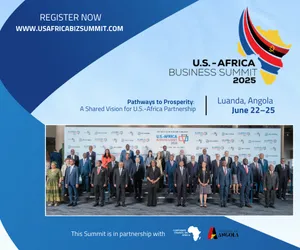The South African rand is yet again in the wars. Like a handful of other emerging markets, the US’s ‘tapering’ bailout of its economy has sucked value from their currencies, leading to fairly spectacular falls. In response, the South African Reserve Bank has raised its base lending rate but this has led to confusion in the market. Tom Nevin has the details.
The South African money market cognoscenti – asset managers, traders, an assortment of economists and others of the regional financial motley crew – were caught on the wrong foot in February when the South African Reserve Bank (SARB) announced a half percent rise in the repo rate.
The move by the Bank’s monetary policy committee (MPC) adjusted the key re-purchase rate to 5.5% and increased the prime lending rate to 9%. Banks are allowed to add an additional 3.5% to the repo rate. The move, explained the Bank’s governor, Gill Marcus, was a measure to prop up the steadily weakening rand currency and as a counter to “external” influences that were dragging the rand down.
“Exchange rate pressures are expected to intensify as markets adjust to the new pattern of global capital flows,” said Marcus. “The primary responsibility of the Bank is to keep inflation under control and ensure that inflation expectations remain well anchored.”
Ms Marcus said the rate decision had not been influenced by Turkey’s surprise huge rate hike the previous day and was not aimed at affecting the exchange rate.
If the move was intended to steady the spiralling rand rate, it had the opposite effect and sent the rand crashing even further, on the day plunging from R10.84 – $1 to R11.35. There was some recovery, but the damage was done and the rand floundered in the panic of uncertainty.
The real reasons for the sudden interest rate hike, the first in five years, are still a mystery for most. The main reason that would trigger an increase, menacing inflation, was conspicuous by its absence. The Bank has pegged the inflation rate at 3%–6% and it was comfortably within those limits when the decision was taken to arbitrarily raise the rate.
The Central Bank explained this apparent anomaly by saying it expected the inflation rate to reach 6.6% by the end of 2014, but the criteria it offered for this assumption was vague and ambiguous.
The retail banks are anxious for higher rates after years of languishing at a low (for South Africa) 5%. Peculiar to South Africa, banks are permitted by the Reserve Bank to load the repo rate by an additional 3½%, so the higher the interest rate the better it is for the banks. It is intended as a buffer against debt risk and as other lending hedges. It’s also possible that the government turned the screws to make the rate more interesting to foreign investors and revitalise the flow of capital into South Africa’s money markets.
The Reserve Bank will insist, often fiercely, that it is independent and immune to any public or private influence. However, the composition of the board and its voting procedure suggest otherwise and allow the possibility of government intervention.
The SARB’s board consists of a governor, three deputy governors, and eleven directors. The governor and deputy governors are appointed for five-year terms by the President of South Africa in consultation with the Minister of Finance. Four of the directors are also appointed by the President for terms of three years. The remaining seven directors are appointed by the bank’s shareholders, also for a three-year term.
While there was a general view that South Africa’s low 5% interest rate was helping to stimulate the economy and that there was little reason to hike them, pressure to do so appears to have come from other quarters.
Inflation is a clear and present danger. At the same time, however, inflationary elements are contributed to the greatest degree directly by state-owned companies (SOEs) and the banks and other financial services institutions.
The SOEs consistently drain the treasury with the persistent bail-outs they need for survival, and by sending shock waves and their knock-on effect through the economy. SAA, Eskom, Transnet, ACSA, Denel, Sanral and virtually each and every corporation owned and run by the government annually demands the state’s financial help.
On top of that they regularly and substantially raise their consumer rates and prices, inexorably driving up inflation. The price of petrol is at a record high and is another driver of inflation quite unrelated to consumer behaviour.
Perhaps it was with the state-owned companies, monopolies in the main, signalling and in some cases implementing, price hikes in mind that Marcus sounded the inflation alarm bell.
“The forecast average inflation rate for 2014 is 0.6% higher at 6.3%,” she noted. “Inflation is expected to breach the upper end of the target range in the second quarter of 2014 and to reach a peak of 6.6% in the final quarter of the year before declining to 6% in the second quarter of 2015.”
Wayne McCurrie, asset manager with Momentum Wealth, described market losses that followed as “clearly widespread. The rate hike was not anticipated at all by anyone in the market”.
Emerging markets feel the strain
Since the end of last year, emerging market currencies have been taking strain, South Africa’s amongst them. The ungluing became serious when the Argentinian peso crashed over 15% against the dollar in one session. The Turkish lira subsided to a record low; the Russian rouble and the rand hit multiyear lows.
“The risk on threat to emerging countries and their currencies, including the rand, can be easily identified,” notes Brian Kantor, chief economist and investment strategist at Investec Securities. “More confidence in the US growth outlook leads to higher interest rates. These higher interest or discount rates have been mostly tolerated by the valuations attached to US equities, but unwelcome to emerging market equities, as rising interest rates in emerging economies, led inevitably by the US rates, threaten the already unpromising growth outlook for emerging economies.”
Kantor maintains that there is also a risk off threat to emerging markets even as US rates move lower. Raising interest rates has done little to help support exchange rates. Intervening by selling dollars has also not helped stem the currency weakness. It is his belief that the global tide is flowing too strongly to be diverted and higher interest rates will weaken domestic demand further.
While lowering short-term interest rates amid a sharp currency depreciation may be regarded as too sanguine an approach, leaving them on hold would seem to be the best that can be done in circumstances beyond the control of the monetary authorities.
Kantor maintains that the best approach for an economy under stress is to allow a floating exchange rate to help absorb the pressures imposed by less sympathetic global investors; and for the authorities to do what they can with monetary policy to relieve some of the unwelcome pressure on domestic spending.
“For South Africa,” he says, “this means the mines, factories, hotels, restaurants and tour operators should stay open for business – or, better still, work overtime and double shifts where extra demand is encouraged by the weaker rand. The task for economic policy is to make sure growth led by exports and import replacement is encouraged. Only the prospect of faster growth will attract more capital to the businesses that drive the economy, support the rand and also improve the outlook for inflation.”
While searching for reasons for the steadily worsening worth of the rand, the interest rate hike being one, the market seemed to settle on the strike in the platinum sector, the current account deficit and the budget deficit as the most likely.
Rand Merchant Bank economist, James Formby, says South Africa could be in for a tough time in the coming months as the economy responded to the rand’s weakness by reducing imports and increasing exports.
“However,” he cautioned, “in the short term the outlook for exports is restrained by the unrest in the platinum sector and the time lag involved in local manufacturers increasing capacity.”
He adds: “There is an important economic opportunity for the local economy provided by the weaker real rand exchange rate. This is for domestic producers, enjoying wider operating profit margins, to take a larger share of the domestic market from importers and to increase their share of export markets through keener pricing, increased output and employment.
“Such responses raise growth rates and are the only known method likely to impress foreign investors.”
Commentator Doug da Costa says it does not take a rocket scientist to realise that it is not the consumer that creates inflation.
“The government, banks and all the other credit providers do so.
“One would think the Reserve Bank would force the government to stop spending money. South Africa is battling to maintain a 2% growth rate.
Instead of promoting growth, the Reserve Bank is employing old and dangerous tactics which will destroy the struggling South African economy, just as such measures did in 1998.
“It is mind boggling,” says Da Costa, “surely this Reserve Bank can learn from past mistakes.”
Want to continue reading? Subscribe today.
You've read all your free articles for this month! Subscribe now to enjoy full access to our content.
Digital Monthly
£8.00 / month
Receive full unlimited access to our articles, opinions, podcasts and more.
Digital Yearly
£70.00 / year
Our best value offer - save £26 and gain access to all of our digital content for an entire year!

 Sign in with Google
Sign in with Google 





